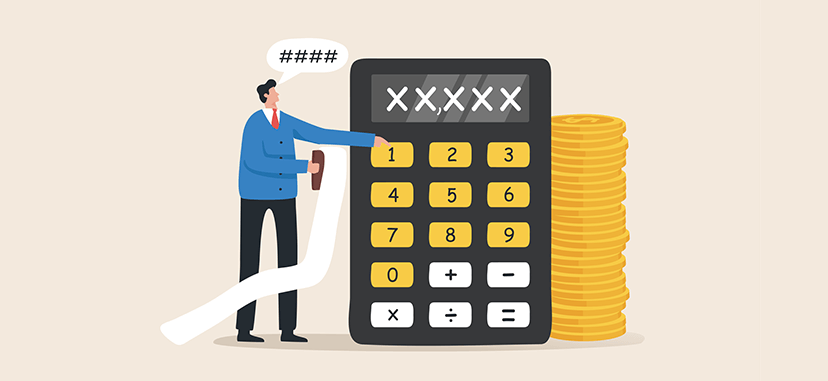
Click the button to start reading
Quick Guide: How to Calculate BAC in Project Management
Tired of the chaos that comes with managing project expenses? Drowning in a sea of costs, desperately trying to stay within budget?
Luckily, there is a simple yet powerful tool to transform the way you manage your project’s financial health.
Introducing BAC, or Budget At Completion, the best shortcut to keeping your project in check. BAC is your key to monitoring your project’s expenses, ensuring you stay within the budget. Just think of it: no more guesswork, no more overspending – just a streamlined and effective financial management system.
In this blog post, we’ll take a closer look at BAC in project management, why it’s essential in project management, and how you can use it to make informed decisions. So buckle up, and let’s dive in!

What is BAC in project management?
BAC stands for Budget At Completion. It represents the total budgeted cost of the project at its completion and helps project managers to monitor the project’s overall financial health.
Here’s a simple explanation of BAC meaning in project management.
Imagine you and your friends plan a road trip from coast to coast, and you have a fixed budget for the entire trip. Your BAC is equivalent to this fixed budget.
As you hit the road, you encounter unexpected expenses such as gas, food, and lodging. These expenses are your actual project expenses. At some point, you realize that you’re spending more money than you originally estimated. You supposed your BAC would last the entire trip, but it’s running out faster than you expected.
To address this, you start to monitor your expenses and make adjustments. You find ways to save money on gas, stay in cheaper hotels, and cut back on food expenses. This is similar to how a project manager uses BAC analysis to monitor project expenses and make adjustments to bring the project back on track.
By the end of the trip, you reach your destination with some money left in your BAC. This means that you were able to complete the trip within the budget you originally set. Similarly, a project manager who manages a project within the original BAC is considered to have managed the project successfully.
In this quick example, BAC is the fixed budget you set for the trip, and monitoring expenses is equivalent to BAC analysis in project management.

Methods of how to calculate BAC in project management
Different formulas are available on how to calculate the budget at completion. Each of these techniques comes with its strengths and weaknesses. Ultimately, project managers should choose the method that best suits their project’s requirements and constraints.
Here are some of the methods on how to find BAC in project management:
- Bottom-up estimating. This method involves breaking down the project into smaller pieces and calculating the cost of each task. You then add up the estimates to determine the total project cost. This approach is time-consuming but provides a more accurate estimate of the project cost, as it considers the details of each task.
- Top-down estimating uses historical data or expert judgment to estimate the total project cost. This approach is less accurate but requires less time and resources to complete. Use this method when a project is in its early stages or when limited information is available.
- Analogous estimating involves using similar past projects as a basis for estimating the total cost of the current project. The assumption is that similar projects will have similar costs. Analogous estimating is less accurate than bottom-up estimating but is faster and requires fewer resources.
- Parametric estimation is a technique to estimate project costs based on statistical relationships between project variables, such as cost and duration. This method involves using historical data and mathematical models to calculate the estimated cost of a project. Opt for this approach when there is limited information about the project.
- Expert judgment, on the other hand, is a qualitative method that involves consulting with experts to estimate project costs. This method is useful when no historical data is available for similar projects.
Pro tip: While these methods help to estimate BAC, they aren’t foolproof and may not always provide an accurate estimate of the actual project cost. Therefore, to find the best formula for BAC in project management, project managers must continually monitor the project’s actual cost and compare it with the estimated cost.

Examples of how to calculate BAC in project management
BAC is calculated by adding up all the budgeted costs for each task or activity in the project plan. Let’s break it down further and look into a few examples of the BAC formula in project management across different industries:
- Construction Industry: In the construction industry, BAC can be calculated by estimating the total cost of the project, including materials, labor, equipment, and overhead. For example, if the estimated cost of a construction project is $1 million, the BAC would be $1 million.
- Software Development Industry: In the software development industry, BAC can be calculated by estimating the total cost of developing the software, including salaries, hardware, software licenses, and other related expenses. For example, if the estimated cost of developing a software application is $500,000, the BAC would be $500,000.
- Marketing Industry: In this case, the project’s total cost will include salaries of marketing professionals, advertising expenses, and other related expenses. For example, if the cost of a marketing campaign is $1 million, the BAC would be $1 million.
These are just a few examples, but BAC can be applied to virtually any industry or project. The key is to accurately estimate the project’s total cost upfront, and then use BAC to track expenses and ensure that the project stays within budget.

How does BAC help calculate other key metrics?
Project managers use BAC to calculate other important metrics, such as Estimate At Completion (EAC) and Variance At Completion (VAC). EAC estimates the project’s total cost based on the project’s actual performance to date. On the other hand, VAC measures the difference between the budgeted cost and the actual cost at completion.
You can compare BAC, EAC, and VAC to a marathon race.
BAC (Budget at Completion) is like the distance of the marathon race, representing the total budgeted cost of the project at its completion.
EAC (Estimate at Completion) is like re-evaluating the distance you’ve left to run based on your current speed and progress. It represents an estimate of the project’s total cost, based on the current progress and performance.
VAC (Variance at Completion) is like the difference between the distance you initially planned to run and the distance you actually ended up running. It represents the difference between the budgeted cost and the project’s estimated cost at its completion.
BAC, EAC, and VAC: A quick example
Projects often go off course. As per KPMG’s survey, 37% of respondents reported that their companies failed to meet budget and/or timeline performance targets. Despite these alarming statistics, it is possible to rescue your project from failure and deliver it on schedule. One critical task is to ensure accurate and timely estimates for BAC, EAC, and VAC.
Imagine a construction project that has an estimated cost of $1,000,000 and a completion timeline of 12 months. The BAC is $1,000,000. Six months into the project, the project manager discovers that actual costs are higher than expected due to unforeseen circumstances, and the project is behind schedule.
The project manager revises the project’s cost and estimates that it will now cost $1,500,000 and take 18 months to complete. This new estimate, called the EAC (Estimate at Completion), reflects the additional costs required based on current performance. The VAC (Variance at Completion), which is $500,000, is the difference between the original budgeted cost and the revised estimate.
A negative VAC indicates that the project is over budget, and a positive VAC suggests that the project is under budget. In this case, the project is over budget by $500,000. It is a significant variance that needs to be managed closely to bring the project back on track.

What to include in your BAC document?
The items you include in your BAC document will differ from project to project. To give you a specific example, let’s look into the components a project manager might add to their BAC document for a software product launch:
- Labor costs. This includes salaries, wages, benefits, and other compensation for all team members working on the project.
- Equipment and software costs include the costs of purchasing, renting, or leasing software, hardware, and other equipment.
- Travel and lodging costs. Need to attend meetings and events related to the product launch? Your BAC document should include any costs for traveling to various locations.
- Marketing and advertising costs. Costs associated with promoting the product launch, such as advertising, public relations, and social media marketing.
- Testing and quality assurance costs. You may need to hire third-party testers or use testing automation tools to ensure your product’s quality. Thus, consider any costs associated with testing the product and ensuring its quality before it is launched.
- Legal and regulatory costs. Note that you may also need to obtain necessary permits and licenses to comply with relevant laws and regulations.
- Contingency fund. No one will guarantee you won’t encounter delays and scope changes. So, set aside a reserve fund for unexpected costs or issues that may arise during the project’s development and launch.
By including these components in the BAC document, you can better manage the costs of launching a new software product.
Let’s sum it up!
Think of BAC in project management as a financial roadmap. Just as a traveler adjusts their route to reach their destination, a project manager must monitor the project’s financial progress and adjust the budget as needed to ensure the project is completed within the allotted budget. Use BAC to stay on track and make adjustments as needed to reach the project’s goals on time – consistently and without fail.
















